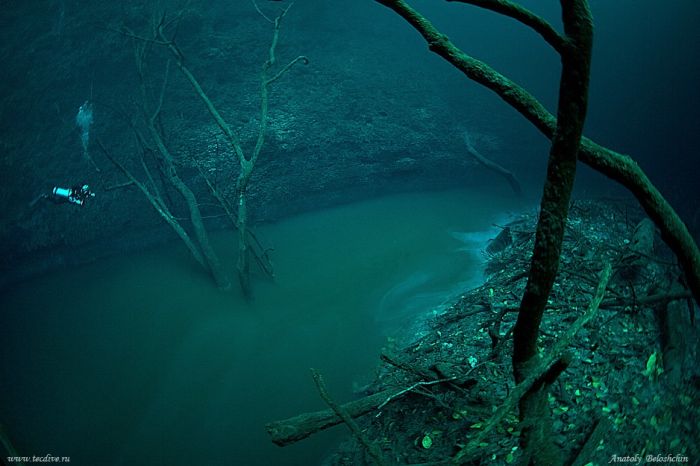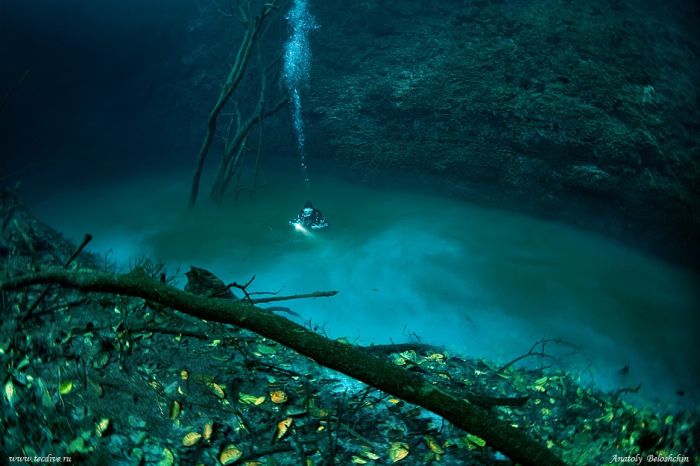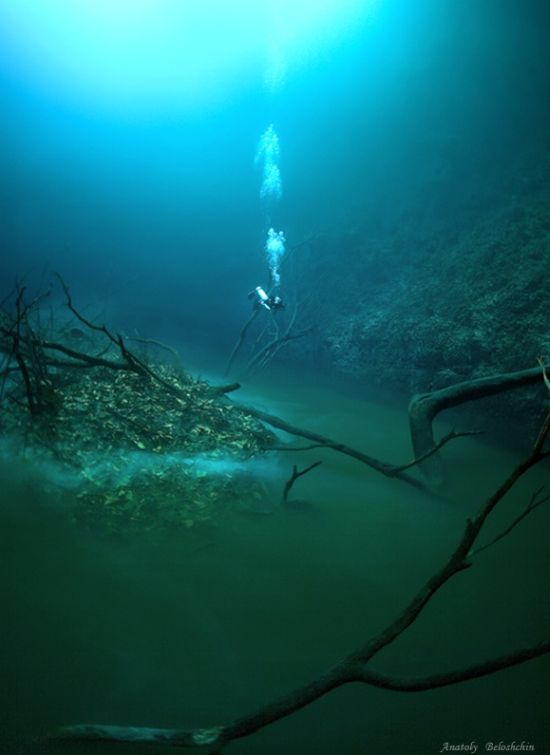For other uses, see
In particle physics, antimatter is the extension of the concept of the antiparticle to matter, where antimatter is composed of antiparticles in the same way that normal matter is composed of particles. For example, an antielectron (a positron, an electron with a positive charge) and an antiproton (a proton with a negative charge) could form an antihydrogen atom in the same way that an electron and a proton form a normal matter hydrogen atom. Furthermore, mixing matter and antimatter would lead to the annihilation of both in the same way that mixing antiparticles and particles does, thus giving rise to high-energy photons (gamma rays) or other particle–antiparticle pairs.
There is considerable speculation as to why the observable universe is apparently almost entirely matter, whether there exist other places that are almost entirely antimatter instead, and what might be possible if antimatter could be harnessed, but at this time the apparent asymmetry of matter and antimatter in the visible universe is one of the greatest unsolved problems in physics. The process by which this asymmetry between particles and antiparticles developed is called baryogenesis.
History of the concept
Negative matter has appeared in the past in several, now abandoned, theories of matter. Using the once popular vortex theory of gravity the possibility of matter with negative gravity was discussed by William Hicks in the 1880s. Another old theory (1880s and 1890s) is due to Karl Pearson who proposed "squirts" (sources) and sinks of the flow of aether. The squirts represented normal matter and the sinks represented negative matter, a term which Pearson is credited with coining. Pearson's theory also required a fourth dimension for the aether to flow from and into.[1]
The term antimatter was first used by Arthur Schuster in two rather whimsical letters to Nature in 1898,[2] in which he coined the term. He hypothesized antiatoms, whole antimatter solar systems and discussed the possibility of matter and antimatter annihilating each other. Schuster's ideas were not a serious theoretical proposal, merely speculation, and like the previous ideas, differed from the modern concept of antimatter in that it possessed negative gravity.[3]
The modern theory of antimatter begins with a paper[4] by Paul Dirac in 1928 who realised that his relativistic version of the Schrödinger wave equation for electrons was predicting the possibility of anti-electrons. These were later discovered by Carl Anderson and named positrons. Although Dirac did not himself use the term antimatter, its use follows on naturally enough from anti-electron, anti-proton etc.[5]
Notation
One way to denote an antiparticle is by adding a bar (or macron) over the particle's symbol. For example, the proton and antiproton are denoted as p and p, respectively. The same rule applies if one were to address a particle by its constituent components. A proton is made up of u u d quarks, so an antiproton must therefore be formed from u u d antiquarks. Another convention is to distinguish particles by their electric charge. Thus, the electron and positron are denoted simply as e− and e+ respectively.
Origin and asymmetry
Almost all matter observable from the Earth seems to be made of matter rather than antimatter. Many scientists believe that this preponderance of matter over antimatter (known as baryon asymmetry) is the result of an imbalance in the production of matter and antimatter particles in the early universe, in a process called baryogenesis. If antimatter-dominated regions of space existed, the gamma rays produced in annihilation reactions along the boundary between matter and antimatter regions would be detectable. The amount of matter presently observable in the universe only requires an imbalance in the early universe on the order of one extra matter particle per billion matter-antimatter particle pairs.[6]
Antiparticles are created everywhere in the universe where high-energy particle collisions take place. High-energy cosmic rays impacting Earth's atmosphere (or any other matter in the solar system) produce minute quantities of antimatter in the resulting particle jets, which are immediately annihilated by contact with nearby matter. It may similarly be produced in regions like the center of the Milky Way Galaxy and other galaxies, where very energetic celestial events occur (principally the interaction of relativistic jets with the interstellar medium). The presence of the resulting antimatter is detectable by the gamma rays produced when positrons annihilate with nearby matter. The gamma rays' frequency and wavelength indicate that each carries 511 keV of energy (i.e. the rest mass of an electron or positron multiplied by c2).
Recent observations by the European Space Agency's INTEGRAL (International Gamma-Ray Astrophysics Laboratory) satellite may explain the origin of a giant cloud of antimatter surrounding the galactic center. The observations show that the cloud is asymmetrical and matches the pattern of X-ray binaries, binary star systems containing black holes or neutron stars, mostly on one side of the galactic center. While the mechanism is not fully understood, it is likely to involve the production of electron-positron pairs, as ordinary matter gains tremendous energy while falling into a stellar remnant.[7][8]
Antimatter may exist in relatively large amounts in far away galaxies due to cosmic inflation in the primordial time of the universe. NASA is trying to determine if this is true by looking for X-ray and gamma ray signatures of annihilation events in colliding superclusters.[9]
Artificial production
Antiparticles are also produced in any environment with a sufficiently high temperature (mean particle energy greater than the pair production threshold). During the period of baryogenesis, when the universe was extremely hot and dense, matter and antimatter were continually produced and annihilated. The presence of remaining matter, and absence of detectable remaining antimatter,[10] also called baryon asymmetry, is attributed to violation of the CP-symmetry relating matter and antimatter. The exact mechanism of this violation during baryogenesis remains a mystery.
Positrons are also produced via the radioactive beta+ decay, but this mechanism can be considered as "natural" as well as "artificial".
Antihydrogen
Main article: Antihydrogen
In 1995 CERN announced that it had successfully brought into existence nine antihydrogen atoms by implementing the SLAC/Fermilab concept during the PS210 experiment. The experiment was performed using the Low Energy Antiproton Ring (LEAR), and was led by Walter Oelert and Mario Macri. Fermilab soon confirmed the CERN findings by producing approximately 100 antihydrogen atoms at their facilities.
The antihydrogen atoms created during PS210, and subsequent experiments (at both CERN and Fermilab) were extremely energetic ("hot") and were not well suited to study. To resolve this hurdle, and to gain a better understanding of antihydrogen, two collaborations were formed in the late 1990s—ATHENA and ATRAP. In 2005, ATHENA disbanded and some of the former members (along with others) formed the ALPHA Collaboration, which is also situated at CERN. The primary goal of these collaborations is the creation of less energetic ("cold") antihydrogen, better suited to study.
In 1999 CERN activated the Antiproton Decelerator, a device capable of decelerating antiprotons from 3.5 GeV to 5.3 MeV—still too "hot" to produce study-effective antihydrogen, but a huge leap forward.
In late 2002 the ATHENA project announced that they had created the world's first "cold" antihydrogen. The antiprotons used in the experiment were cooled sufficiently by decelerating them (using the Antiproton Decelerator), passing them through a thin sheet of foil, and finally capturing them in a Penning trap. The antiprotons also underwent stochastic cooling at several stages during the process.
The ATHENA team's antiproton cooling process is effective, but highly inefficient. Approximately 25 million antiprotons leave the Antiproton Decelerator; roughly 10 thousand make it to the Penning trap, which is about 1/2500 or 0.04% of the original amount.
In early 2004 ATHENA researchers released data on a new method of creating low-energy antihydrogen. The technique involves slowing antiprotons using the Antiproton Decelerator, and injecting them into a Penning trap (specifically a Penning-Malmberg trap[citation needed]). Once trapped the antiprotons are mixed with electrons that have been cooled to an energy potential significantly less than the antiprotons; the resulting Coulomb collisions cool the antiprotons while warming the electrons until the particles reach an equilibrium of approximately 4 K.
While the antiprotons are being cooled in the first trap, a small cloud of positron plasma is injected into a second trap (the mixing trap). Exciting the resonance of the mixing trap’s confinement fields can control the temperature of the positron plasma; but the procedure is more effective when the plasma is in thermal equilibrium with the trap’s environment. The positron plasma cloud is generated in a positron accumulator prior to injection; the source of the positrons is usually radioactive sodium.
Once the antiprotons are sufficiently cooled, the antiproton-electron mixture is transferred into the mixing trap (containing the positrons). The electrons are subsequently removed by a series of fast pulses in the mixing trap's electrical field. When the antiprotons reach the positron plasma further Coulomb collisions occur, resulting in further cooling of the antiprotons. When the positrons and antiprotons approach thermal equilibrium antihydrogen atoms begin to form. Being electrically neutral the antihydrogen atoms are not affected by the trap and can leave the confinement fields.
Utilizing this method, ATHENA researchers predict they will be able to create up to 100 antihydrogen atoms per operational second.
ATHENA and ATRAP are now seeking to further cool the antihydrogen atoms by subjecting them to an inhomogeneous field. While antihydrogen atoms are electrically neutral, their spin produces magnetic moments. These magnetic moments vary depending on the spin direction of the atom, and can be deflected by inhomogeneous fields regardless of electrical charge.
The biggest limiting factor in the production of antimatter is the availability of antiprotons. Recent data released by CERN states that when fully operational their facilities are capable of producing 107 antiprotons per second.[citation needed] Assuming an optimal conversion of antiprotons to antihydrogen, it would take two billion years to produce 1 gram or 1 mole of antihydrogen (approximately 6.02×1023 atoms of antihydrogen). Another limiting factor to antimatter production is storage. As stated above there is no known way to effectively store antihydrogen. The ATHENA project has managed to keep antihydrogen atoms from annihilation for tens of seconds — just enough time to briefly study their behavior.
Hydrogen atoms are the simplest objects that can be considered as "matter" rather than as just particles.
Simultaneous trapping of antiprotons and antielectrons was reported[11] and the cooling is achieved;[12] there are patents on the way of production of antihydrogen.[13]
Antihelium
A small number of nuclei of the antihelium isotope, \scriptstyle{\mathrm{^3\overline{He}}} have been created in collision experiments.[14]
Positrons
Main article: Positrons
Positrons were reported[15] in November 2008 to have been generated by Lawrence Livermore National Laboratory in larger numbers than by any previous synthetic process. A laser drove ionized electrons through a millimeter radius gold target's nuclei, which caused the incoming electrons to emit energy quanta, that decayed into both matter and antimatter. Positrons were detected at a higher rate and in greater density than ever previously detected in a laboratory.
Previous experiments made smaller quantities of positrons using lasers and paper-thin targets; however, new simulations showed that short, ultra-intense lasers and millimeter-thick gold are a far more effective source.[16]
Cost
Antimatter is said to be the most costly substance in existence, with an estimated cost of $25 billion per gram for positrons[17], and $62.5 trillion per gram for antihydrogen.[18] This is because production is difficult (only a few antiprotons are produced in reactions in particle accelerators), and because there is higher demand for the other uses of particle accelerators. According to CERN, it has cost a few hundred million Swiss Francs to produce about 1 billionth of a gram (the amount used so far for particle/antiparticle collisions).[19]
Several NASA Institute for Advanced Concepts-funded studies are exploring whether it might be possible to use magnetic scoops to collect the antimatter that occurs naturally in the Van Allen belts of Earth, and ultimately, the belts of gas giants like Jupiter, hopefully at a lower cost per gram.[20]
Medical
Antimatter-matter reactions have practical applications in medical imaging, such as positron emission tomography (PET). In positive beta decay, a nuclide loses surplus positive charge by emitting a positron (in the same event, a proton becomes a neutron, and neutrinos are also given off). Nuclides with surplus positive charge are easily made in a cyclotron and are widely generated for medical use.
Fuel
In antimatter-matter collisions resulting in photon emission, the entire rest mass of the particles is converted to kinetic energy. The energy per unit mass (9×1016 J/kg) is about 10 orders of magnitude greater than chemical energy (compared to TNT at 4.2×106 J/kg, and formation of water at 1.56×107 J/kg), about 4 orders of magnitude greater than nuclear energy that can be liberated today using nuclear fission (about 40 MeV per 238U nucleus transmuted to Lead, or 1.5×1013 J/kg), and about 2 orders of magnitude greater than the best possible from fusion (about 6.3×1014 J/kg for the proton-proton chain). The reaction of 1 kg of antimatter with 1 kg of matter would produce 1.8×1017 J (180 petajoules) of energy (by the mass-energy equivalence formula E = mc²), or the rough equivalent of 43 megatons of TNT. For comparison, Tsar Bomba, the largest nuclear weapon ever detonated, reacted an estimated yield of 50 megatons, which required the use of hundreds of kilograms of fissile material (Uranium/Plutonium).
Not all of that energy can be utilized by any realistic propulsion technology, because as much as 50% of energy produced in reactions between nucleons and antinucleons is carried away by neutrinos in these applications, so, for all intents and purposes, it can be considered lost.[21]
Antimatter rocketry ideas, such as the redshift rocket, propose the use of antimatter as fuel for interplanetary travel or possibly interstellar travel. Since the energy density of antimatter is vastly higher than conventional fuels, the thrust to weight equation for such craft would be very different from conventional spacecraft.
The scarcity of antimatter means that it is not readily available to be used as fuel, although it could be used in antimatter catalyzed nuclear pulse propulsion for space applications. Generating a single antiproton is immensely difficult and requires particle accelerators and vast amounts of energy—millions of times more than is released after it is annihilated with ordinary matter due to inefficiencies in the process. Known methods of producing antimatter from energy also produce an equal amount of normal matter, so the theoretical limit is that half of the input energy is converted to antimatter. Counterbalancing this, when antimatter annihilates with ordinary matter, energy equal to twice the mass of the antimatter is liberated—so energy storage in the form of antimatter could (in theory) be 100% efficient.
For more regular (earthly) applications however (e.g. regular transport, use in portable generators, powering of cities, ...), artificially created antimatter is not a suitable energy carrier, despite its high energy density, because the process of creating antimatter involves a large amount of wasted energy and is extremely inefficient. According to CERN, only one part in ten billion (10−10) of the energy invested in the production of antimatter particles can be subsequently retrieved.[22]
Antimatter production is currently very limited, but has been growing at a nearly geometric rate since the discovery of the first antiproton in 1955 by Segrè and Chamberlain.[citation needed] The current antimatter production rate is between 1 and 10 nanograms per year, and this is expected to increase to between 3 and 30 nanograms per year by 2015 or 2020 with new superconducting linear accelerator facilities at CERN and Fermilab.
Some researchers claim that with current technology, it is possible to obtain antimatter for US$25 million per gram by optimizing the collision and collection parameters (given current electricity generation costs). Antimatter production costs, in mass production, are almost linearly tied in with electricity costs, so economical pure-antimatter thrust applications are unlikely to come online without the advent of such technologies as deuterium-tritium fusion power (assuming that such a power source actually would prove to be cheap).
Many experts, however, dispute these claims as being far too optimistic by many orders of magnitude. They point out that in 2004, the annual production of antiprotons at CERN was several picograms at a cost of $20 million. This means to produce 1 gram of antimatter, CERN would need to spend 100 quadrillion dollars and run the antimatter factory for 100 billion years.
Storage is another problem, as antiprotons are negatively charged and repel against each other, so that they cannot be concentrated in a small volume. Plasma oscillations in the charged cloud of antiprotons can cause instabilities that drive antiprotons out of the storage trap. For these reasons, to date only a few million antiprotons have been stored simultaneously in a magnetic trap, which corresponds to much less than a femtogram. Antihydrogen atoms or molecules are neutral so in principle they do not suffer the plasma problems of antiprotons described above. But cold antihydrogen is far more difficult to produce than antiprotons, and so far not a single antihydrogen atom has been trapped in a magnetic field.
One researcher of the CERN laboratories, which produces antimatter regularly, said:
If we could assemble all of the antimatter we've ever made at CERN and annihilate it with matter, we would have enough energy to light a single electric light bulb for a few minutes.[23]


























